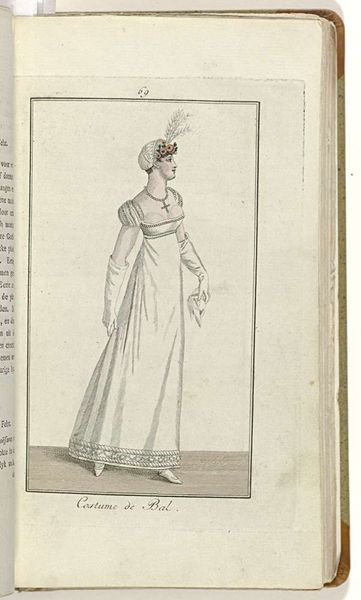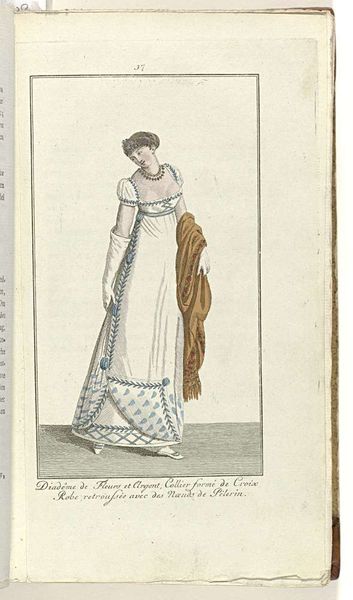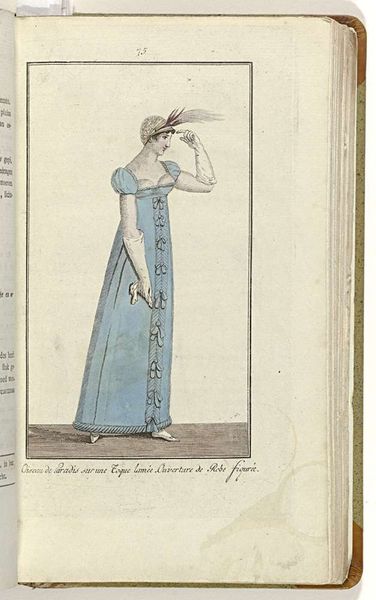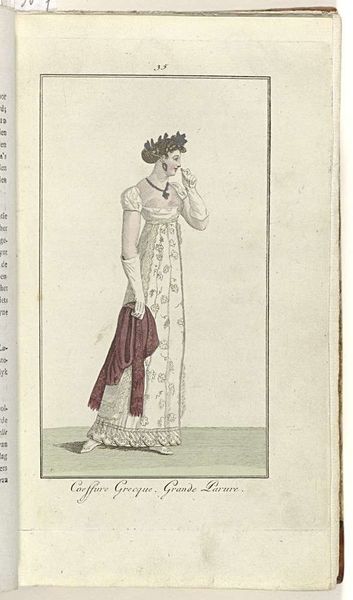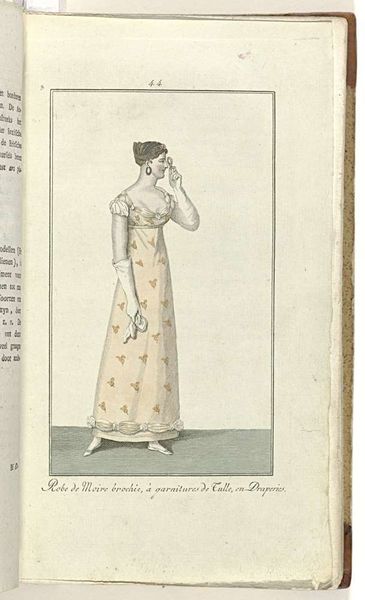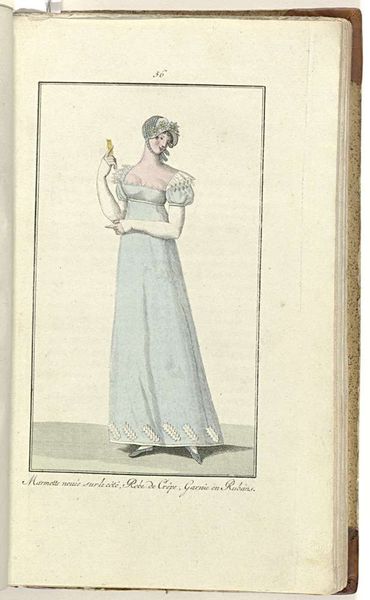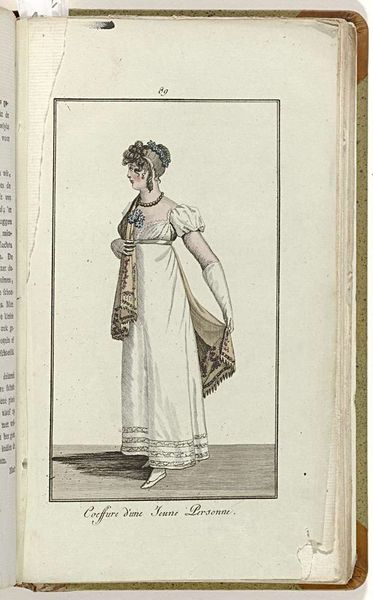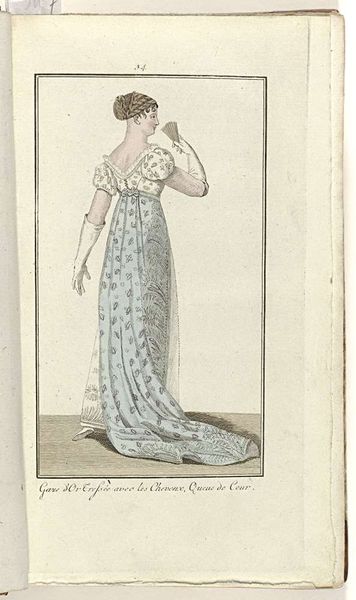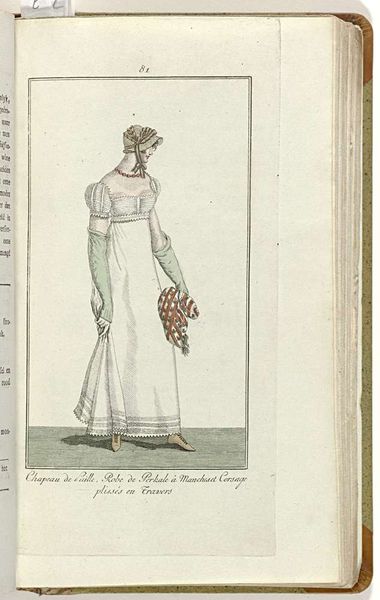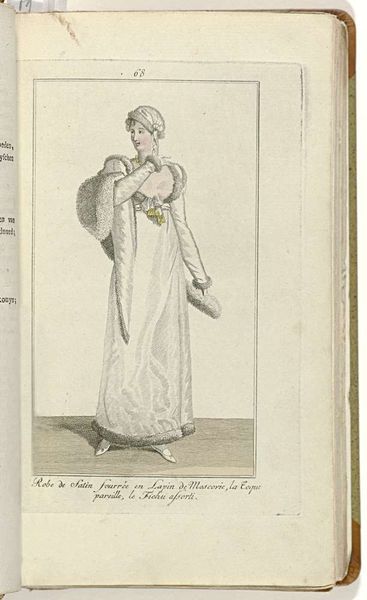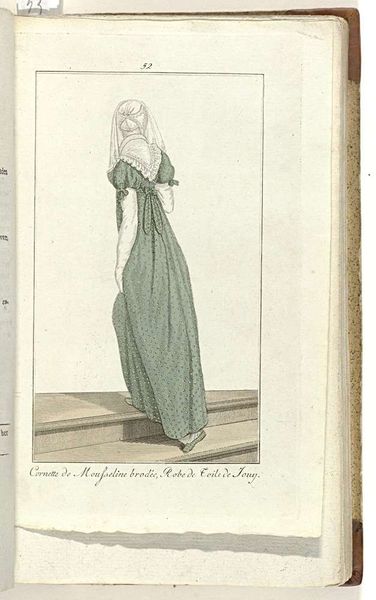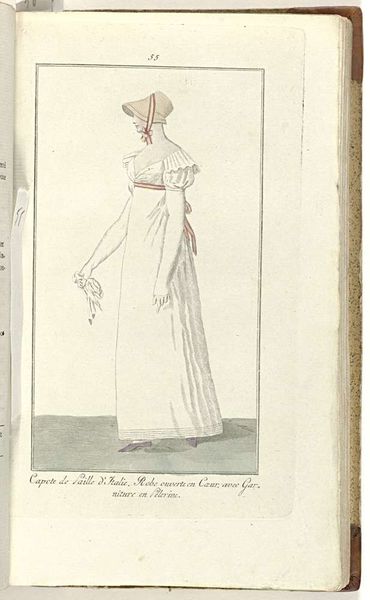
Elegantia, of tijdschrift van mode, luxe en smaak voor dames, Maart 1808, No. 40 : Robe d'Etoffe... 1808
0:00
0:00
anonymous
Rijksmuseum
print, engraving
#
portrait
#
neoclassicism
# print
#
genre-painting
#
dress
#
engraving
Dimensions: height 218 mm, width 120 mm
Copyright: Rijks Museum: Open Domain
Curator: Before us is a print from 1808 entitled "Elegantia, of tijdschrift van mode, luxe en smaak voor dames, Maart 1808, No. 40 : Robe d'Etoffe..." featured in the Rijksmuseum collection. This print, produced through engraving, offers a snapshot into the fashion of the era. Editor: It's incredibly demure! The muted blue and subtle floral design almost make it blend into the background. Despite its detail, it has this delicate, almost frail, feel. Curator: Indeed. "Elegantia" wasn't just showcasing clothing; it was reflecting social ideals. Fashion prints played a pivotal role in disseminating Parisian trends, which became emblematic of refinement. The depicted "Robe d'Etoffe" suggests a society deeply concerned with outward appearances and class distinctions. Editor: And consider the constraints! The high waist and clinging fabric suggest a body almost sculpted by the dress. It makes you wonder about the lived experiences behind such rigid standards, and who really benefitted. This Neoclassical aesthetic almost feels like a denial of the body, ironically displayed on a body. Curator: Absolutely. It also hints at the democratization of fashion through print culture. While the elite set the tone, such images made style accessible, at least visually, to a broader audience. The "mitaines en Tricot de Berlin" points to developing knitting technologies impacting the broader public sphere, however unequally. Editor: Looking at the composition now, notice how she's positioned within the frame—almost like an object to be observed, not a subject with agency. That makes the politics of the image even more glaring. It almost makes the viewer complicit to an act of judgement and dehumanization. Curator: This print embodies that complex dynamic: Commerce intertwined with ideology. These images helped fuel desire, but simultaneously reinforced societal norms. Even the accompanying text suggests an emphasis on acquisition of these items of 'luxury'. Editor: This piece then is not just a benign record of historical dress, but rather an argument. An active cultural tool meant to inform, shape and constrain the behavior and thinking of female and even public spectators to the ideals it proposes. Curator: I concur. It reminds us how crucial it is to dissect images and media, seeing how representations were, and are still, powerful tools in constructing cultural attitudes. Editor: Ultimately, an illustration of the way art both mirrors and perpetuates the structures of its time, offering both beauty and constraints.
Comments
No comments
Be the first to comment and join the conversation on the ultimate creative platform.
